Business Spotlight: Q&A with Susan Campagnola
If you’re looking for inspiration when it comes to quilting for others, look no further than longtime quiler Susan Campagnola. She started quilting more than 60 years ago and has had LOTS of experience quilting for others. We recently took some time to chat with Susan about her machine quilting business and were delighted to get to know her better. Her story about how she started sewing and quilting for others is one that touched our hearts.
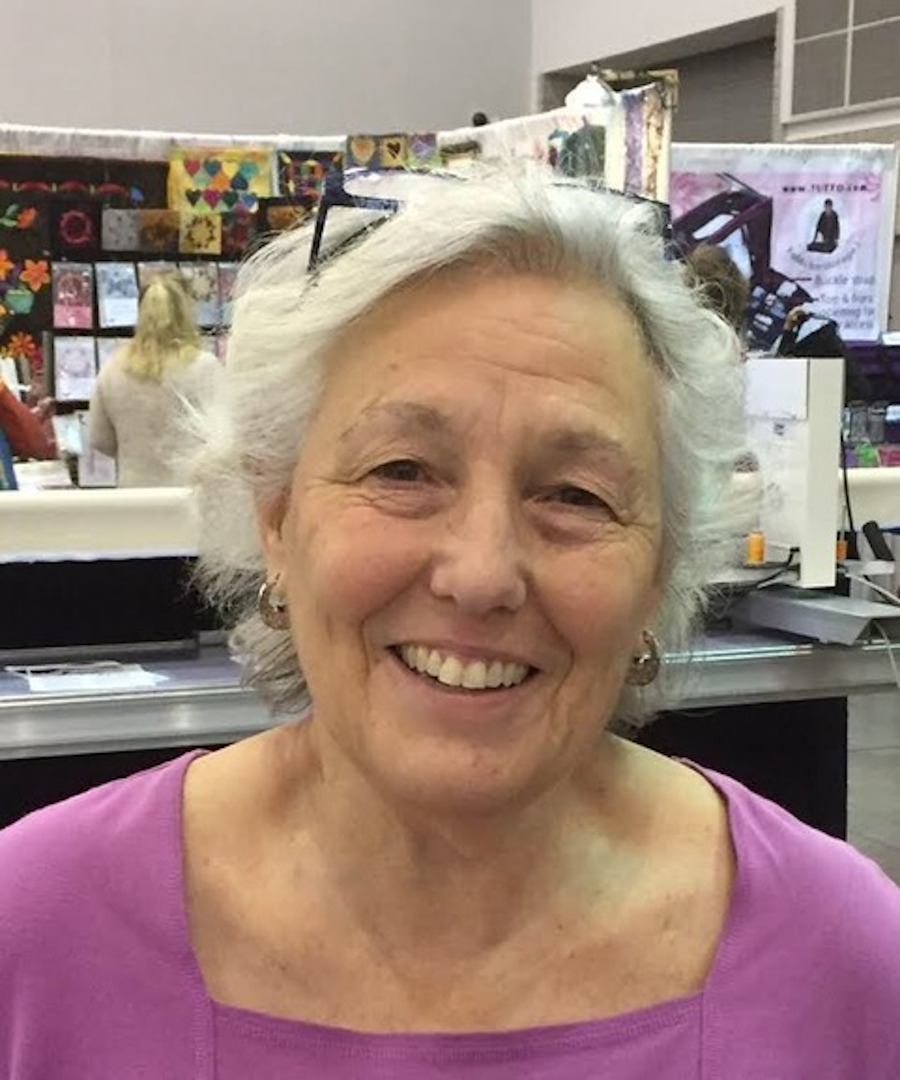
How did you get started quilting and when did you decide to purchase a longarm quilting machine?
I don’t think I am a typical longarm owner. I started using a sewing machine before I started grade school. My grandmother was ill and I had younger siblings, so I was allowed to make doll clothes on an old Strawbridge & Clothier treadle that Daddy had put a motor on. I grew up in a family where every female on both sides of the family did handiwork, often several kinds. We also had little money, so both sides of the family were used to making things themselves.
I made most of my clothes until I was in my 60s. I made curtains, slipcovers, diaper bags; just whatever I needed because I could do it more cheaply than buying it. I refinished furniture, cut the grass, and did all of the yard work for years.
I started quilting the year I graduated from college. Yes, I made one hand-pieced and hand-quilted quilt. But my long use of the sewing machine quickly won. I started quilting more in my 50s and quilted many (maybe 25+) full-bed sized quilts on my precious Bernina until I stripped the gears of the Bernina. It took a while to save the money to have it repaired. During that time I pieced tops on a very inexpensive machine.
By the time a quilt shop opened not far from my home, I had 11 tops and no way to quilt them. I was still working full time as I had ever since college. The owner brought in her portable longarm and wanted me to quilt for people on Saturdays, my day off (I worked four 10-hr days), plus any holidays. So I learned to use her machine by quilting those 11 tops. I had no formal classes, but customers who had machines would watch me and give me tips. With experienced quilters looking over my shoulder, it felt like a trial by fire, but I learned a great deal from them as well as from quilting books.
When the shop owner told me she was going to close the shop due to family health issues, I knew that I wanted to continue longarm quilting, but wanted a sturdier machine. My husband and I had gone to an APQS Road Show a few years before. I had taken copious notes of the information from the sales reps as well as those who currently owned an APQS and were looking to upgrade or add features.
By the time the quilt shop was closing, my husband had fallen ill. Along with my sister, he was instrumental in convincing me to get my my Moriah Matilda Millie. Moriah for the wind, Matilda for the waltzing, and Millie for the Millie. I think my husband felt he may not have long to live and felt this would give me something to do after he passed. He lived for one year after I got my 3M.
I have thoroughly enjoyed my APQS. I only do free-motion quilting. It’s just my personal preference. I have always been a “straight-forward” person. Look at the problem and figure out the best way to tackle it head-on. So the idea of moving the needle over a quilt from the back of the machine and not be able to see what I am doing or where I am going is foreign to how my particular brain works.
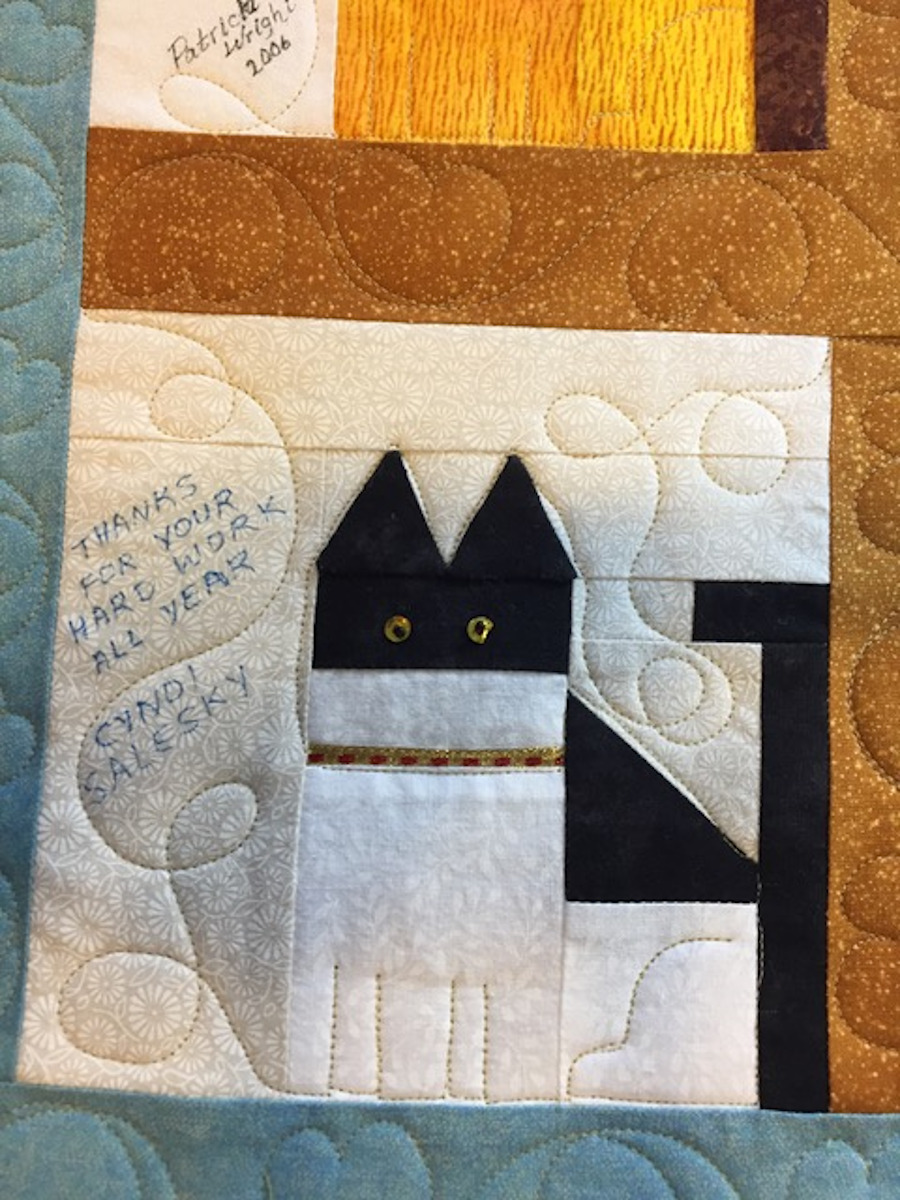
When a quilt is for a person, especially college-age or under, I like to quilt their name onto the quilt. Last year I quilted one for a young man going to college in astronomy. I quilted not only his name and theme of his college on it but also things like “reach for the stars,” “rising star,” “dance among the stars.”
For another quilt that was going to a young woman on a soccer scholarship, I quilted her name, her college, “skill,” “teamwork,” “great job,” and other encouraging notes. For a brief time, I had a website, but all of the quilters who bring me quilts hear of me through our local guild or by word of mouth. I am the one recommended when someone has a lovely appliqué and doesn’t want the quilting to go over the appliqué, but around it.
This past year I have been mostly quilting lap-size prayer quilts for the cancer unit at our small local hospital. This is my contribution to the small prayer group’s effort. We are a small area with many older retired folks, so there is, unfortunately, a need for many of these. On these, I always quilt somewhere the words “love,” “peace,” and “healing.” I also usually quilt mostly hearts on them. I feel they need a lot of love as they are being diagnosed and going through treatment.
One thing I did not find out until I had my APQS machine, is that it is made so that, as much as possible, the owner can be directed via cell phone in making adjustments and repairs. The machine is designed to prevent it from having to be shipped back to the factory for repair. This has been a huge boon for me. And the support of the factory staff has been marvelous. I chose APQS because of its excellent reputation, sturdy construction, glide feature and easy to regulate.
What is your favorite batting?
Quilter’s Dream Mid-loft Poly. My second choice would be Warm & Natural 100% cotton.
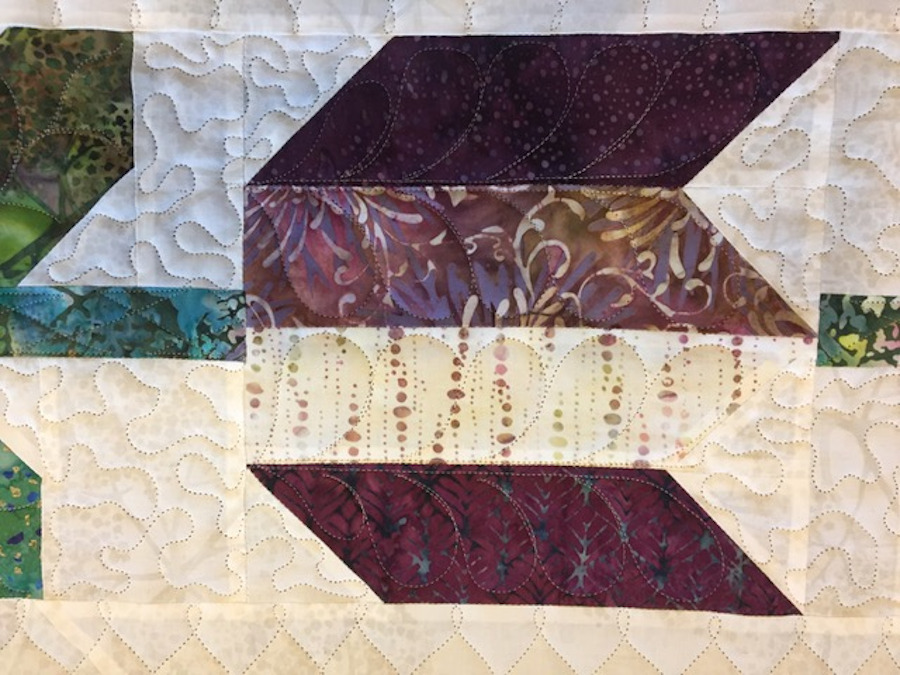
What is your favorite thread?
Superior Threads So Fine #50 with Hab+Dash pre-wound Classic bobbins
What is the best thing about quilting for others?
The best thing about quilting for others is sharing their enthusiasm for their latest project and helping them get it closer to “done.” Done is a wonderful 4-letter word. The dangerous part is that I am exposed to many patterns and designs that I’d also like to make.
What is a downside to quilting for others?
I get sad when I see poorly-constructed quilts and/or the use of cheap materials. The time investment in a quilt is considerable. Poor construction and poor materials make it look like making the quilt was drudgery instead of a joy. The time investment is the same regardless of the materials used, so I encourage people to do the very best they can, including using good materials, even if they have to save up for them. They will be happier with the long run with their finished quilt.
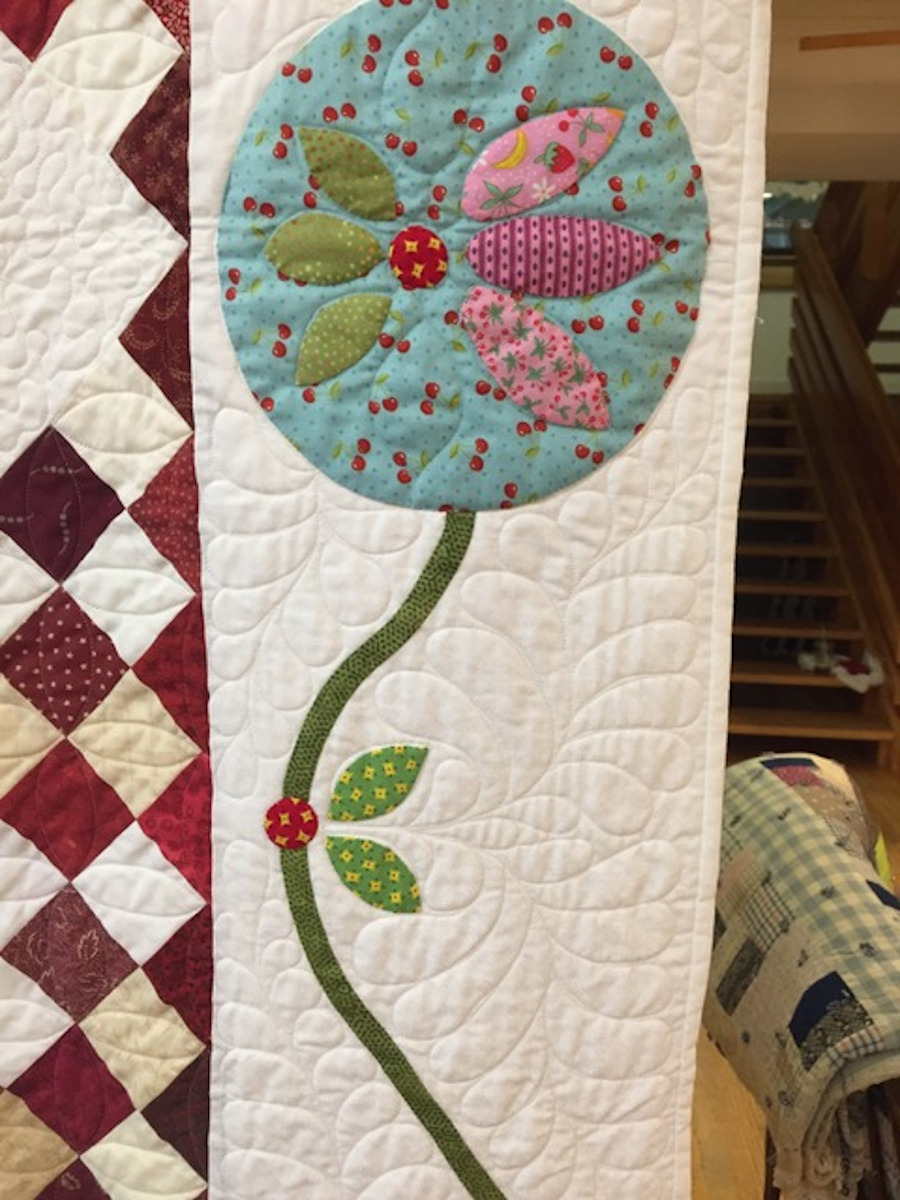
What advice would you give to someone who is thinking of starting a longarm quilting business?
Make sure you can be patient with beginners and with people whose quilting skills are slowly growing. It is a delight to see people’s skills grow. It can be frustrating to quilt poorly constructed quilt tops. With suggestions and encouragement, most can improve.
What do you wish you knew now about running your business that you didn’t know before?
I wish I had realized how hard it would become to make quilts myself. Otherwise, I have no regrets. Quilting for others has been a joy.
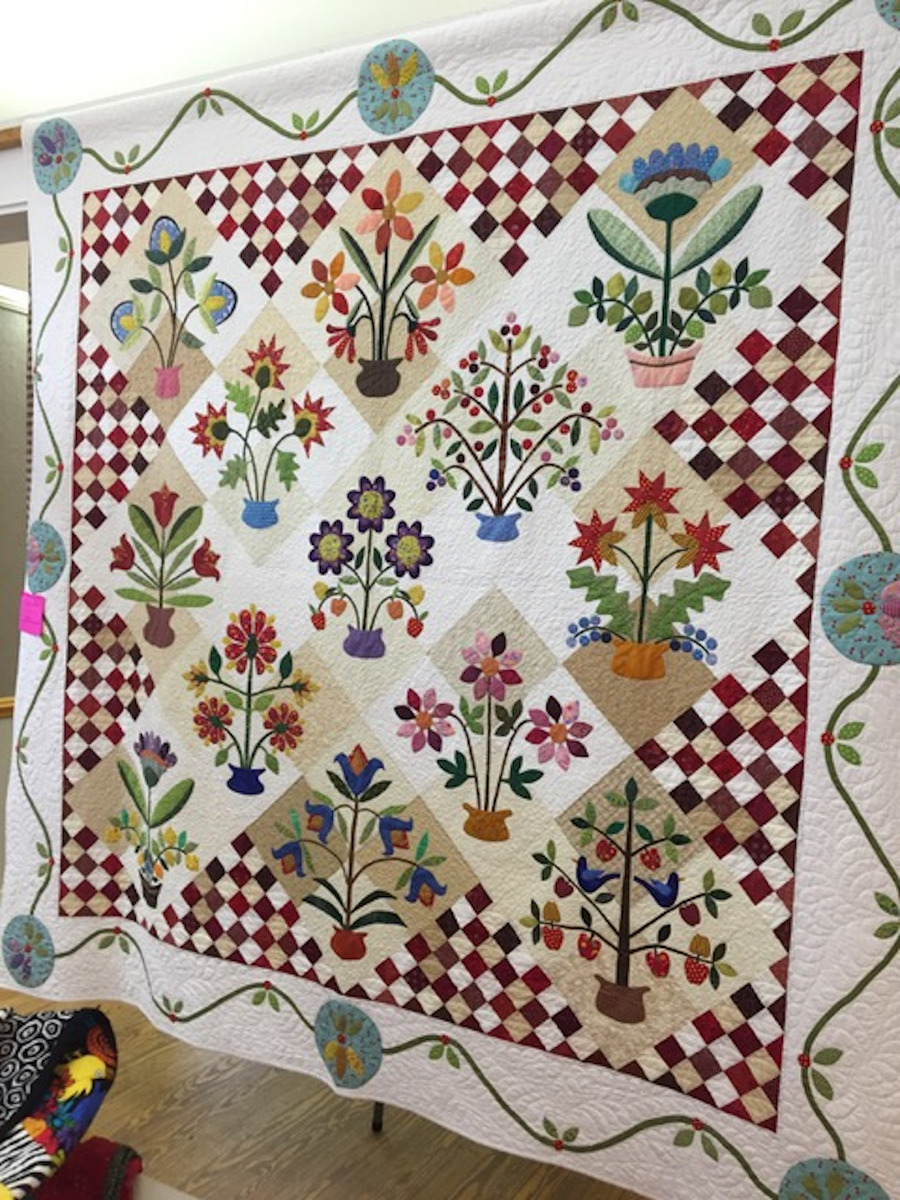
Is there anything else you’d like our readers to know about your business or about the machine quilting business in general?
It is a wonderful business to be in. Quilters are wonderful, caring people.
Thank you, Susan, for sharing your story with us! We are delighted you are part of the APQS family.



